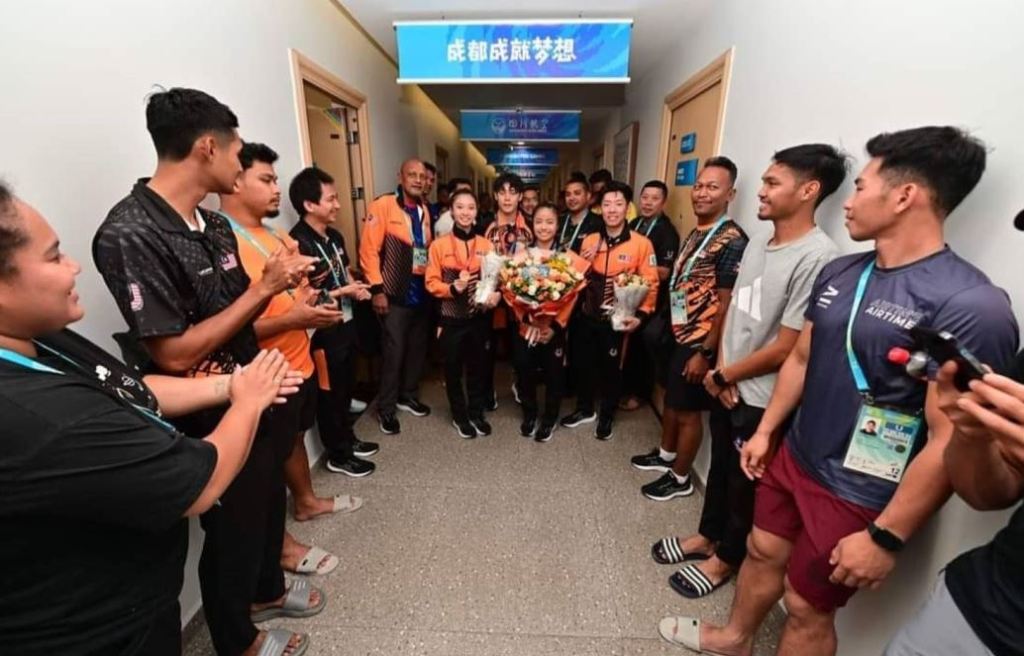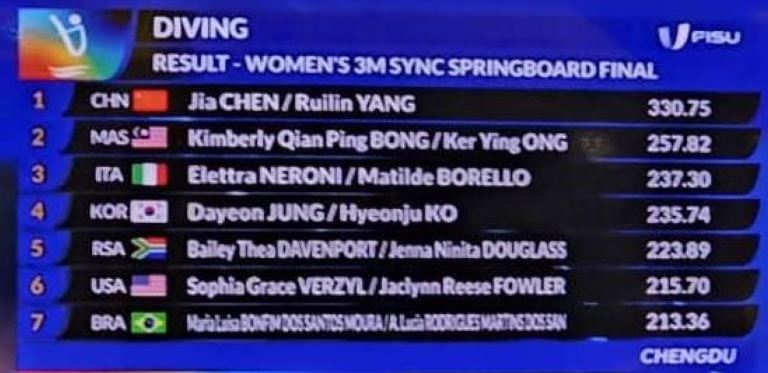LOW IS HIGH ON THE LIST FOR JOB
by Tony Mariadass
The Ministry of Youth and Sports could not have picked a more appropriate and qualified person than Datuk Low Beng Choo, to head the independent committee to resolve any disputes raised by members of a sports body or from the organisation itself.

The Ministry named Low, the Softball Asia president and World Baseball Softball Confederation (WBSC) secretary-general, as the head of the formed committee under the Sport Development Act.

The committee will act as an independent organisation that will seek solutions to a sports-related dispute if they fail to be resolved internally and the Youth and Sports minister, will not be directly involved in any conflict resolution proceedings.
The committee comprises a chairman and four other members, all of whom must have extensive experience and knowledge in sports and are appointed by the minister.
Low, the committee’s chairman, will have four members namely – Malaysian National Cycling Federation vice-president Amarjit Singh Gill, sports law lecturer Jady Zaidi Hassim, former Malaysian Hockey Confederation deputy president Datuk Dr S Shamala and former national squash player Sharon Wee.
Low a lawyer by profession, was a former national netball and softball player, participated in various other sports, namely, field hockey and athletics, at various other levels. She has also coached netball and softball at various levels, and served as umpire, technical official and team manager.
She has extensive knowledge of sports not only in Malaysia, but the world around.
She was first asked to head the committee early in the year, but took her time to accept, as she had to consider whether she could spare the time, considering her hectic schedule as a lawyer, president of Softball Asia, secretary-general with the world body, her involvement with the SEA Games Federation as an advisor and several other international committees.
Besides, Low has had experienced the joy and bitterness in her long association with sports in Malaysia and was obviously was careful to take a decision to plunge into it again.
To top it all, Low is one person, who when undertakes a responsibility, gives nothing short of 100 percent of her time and effort.
“I finally decided to inform Sports Minister Hannah Yeoh, that I will accept the nomination, as my services was required by the nation and they believed that I can contribute and make a difference,” said Low who has served as a member of Sport Advisory Panel to the Malaysian Ministers of Youth and Sports Malaysia for various terms between 2004 to 2016
“I am counting on my committee members to give me their fullest cooperation to work in the name of sports and make decisions based on facts and fairness.”
Besides, Low’s involvement in sports as a player and administrator, she is the best person for the job, as sports arbitration is her forte having served as Chair of Olympic Council of Malaysia Legal Advisory & Alternative Dispute Resolution Committee (2013 to 2015), current member of the Ethics Committee of the International World Games Organisation and of the Ethics Commission of the Commonwealth Games Federation.

Low’s background in sports is a long and distinguished one.
Below is listed her various associations:
Served as an elected member (annual elections) of Malaysia Bar Council (1996 to March 2016)
Served on various committees of the Bar Council, such as Conveyancing Practice Committee, Corporate & Commercial Law Committee, Family Law Committee, Legal Profession Committee, Law Reform Committee, Lawyers’ Welfare Committee, Court Liaison Committee, Organising Committees of Bar’s events and activities
Served as Court Liaison Committee, Cultural and Charity Committee, and Law Reform & New Legislation Committee
Currently still serving as a member of Conveyancing Practice Committee
Registered Mediator of the Malaysian Bar Council Mediation Centre
International Level
Current Secretary-General of World Baseball Softball Confederation (WBSC) (May 2014 to current date)
Current First Vice Chair of the Softball Division of the WBSC
Current Chair of WBSC Integrity Unit, tasked with the establishment and set-up of that Unit
Current member of the WBSC Team for the Los Angeles Olympics 2028
campaign. Served as a member of the WBSC Team that successfully campaigned
for the inclusion of Baseball-Softball onto the Tokyo 2020 programme.
Served as a member of the ISF Strategic Task Force of the “Back-Softball”
Campaign for softball (2006 – 2012) and WBSC the Baseball-Softball “Swing for
the Fences” campaign [2012 to current date] for re-inclusion of both baseball and
softball onto the Olympic Games program
Served as Secretary General of Interim Board of the WBSC (2012 – 2014) – the
Interim Board undertook the task of the merger of the International Baseball
Federation (IBAF) and International Softball Federation (ISF) into the newly
established WBSC recognised by the IOC as the international governing
federation for both baseball and softball
Served as Secretary General of ISF (now under WBSC as WBSC Softball
Division) [2009 to current date] and Deputy Secretary General of ISF [2006 to
2009]
Served as Chair of ISF Legislative Commission [2007, 2011 – 2013], ISF Women
& Sports Commission [2005], ISF Athletes Commission [2007 – 2012], ISF
Development Commission [2007]
President of SCA [2010 – 2014] and Honorary Life President in 2014
Served as Secretary General, SCA [formerly known as Amateur Softball
Association-Asia (ASA-Asia)] [2002 to 2009], Vice President, ASA-Asia [1990-
2002]
Served as Chair of Laws Committee, ASA-Asia [1990-2002] – the Committee
undertook the task of drafting of the Constitution for ASA-Asia and strategic
planning for the revival of ASA-Asia in 1990, and the reviewing the SCA
Constitution in 2002
Served as Technical Committee Member/Jury Member: for Softball for Asian Games Busan – Korea [September 2002]; Olympic Games Athens – Greece [August 2004]; 24th World University Games Bangkok – Thailand [August 2007]
Served as Technical Delegate: for 11th world Women’s Softball Championship Beijing – China [August 2006], Asian Games Doha – Qatar [December 2006]; Asia-Oceania Olympics 2008 Qualifier, Tainan – Taiwan [February 2007]; Asian Women Softball Championship Jakarta – Indonesia [August 2007]; South East Asian Games Bangkok/Korat – Thailand [December 2007]; Olympic Games Beijing – China [August 2008]; World Games Kaohsiung – Taiwan [July 2009]; Asian Games Guangzhou – China [November 2010]
Served as Vice Chair, Commonwealth Advisory Body on Sport (CABOS) (2010 to
expiry of term-limit in 2012):
Member of CABOS [2005 to 2010]
Served as a member of Commonwealth Games Federation Coordination Commission for the Commonwealth Games Gold Coast – Australia 2018
Served as the Chair of the Federation Court for the Commonwealth Games Gold Coast – Australia 2018
Sports – National Level
Served as Vice-President Olympic Council of Malaysia, (OCM) [2002 to 2015] and as Secretary General of OCM [2015 – 2018]:
Served as a member of OCM Media & Public Relations Committee [2005 to
2007], OCM Sports Museum & Hall of Fame [2007 – 2009]; OCM Medical &
Anti-Doping Committee [2005 to 2009]
Served as Chef de Mission for Malaysia national contingent to South East Asian
Games Manila 2005
Member of the Organising Committee for the South East Asian Games Kuala
Lumpur 2017 and Secretary of the Technical (and Sports) Committee
Served as Chair of Special Technical Committee, Malaysian Games (2007 – 2017)
Malaysia’s largest multi-sports event
Served a member of Management Board of Malaysia National Sports Council [for various terms between 2008 – 2019]
Served as President of Softball Association of Malaysia [1999 to April 2014]:
Served as Secretary General [1990 – 1998]








